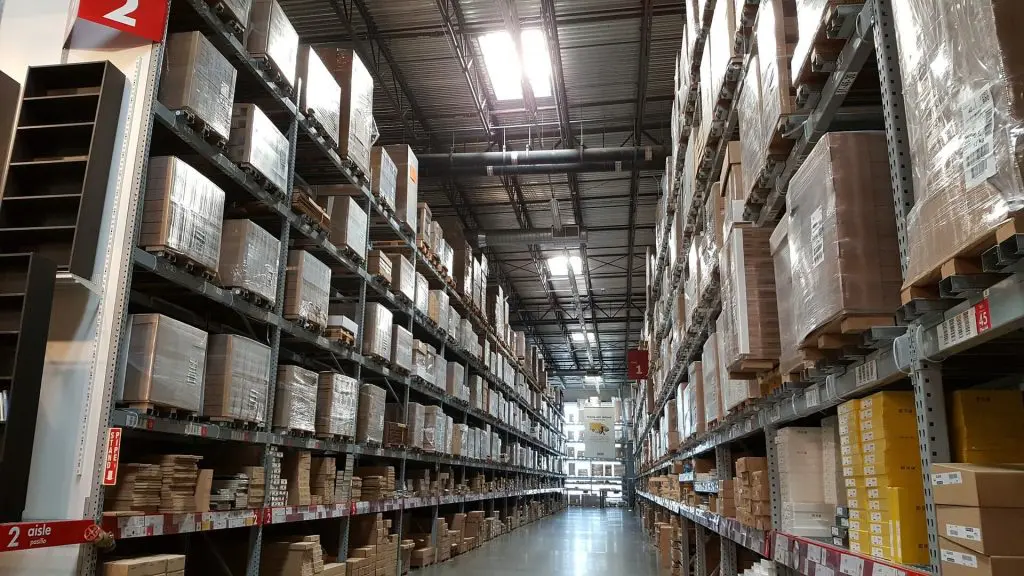So you’ve recently been considering which inventory-tracking system would suit your business and its operations best? You have come to the right place! After having just evaluated the inner-workings of the perpetual inventory system in our previous article, we are now shining a spotlight on the periodic inventory system. Follow along for a comprehensive guide on all things periodic inventory!
What is a Periodic Inventory System?
A periodic inventory system is both an inventory valuation and tracking system involving a physical count of stock, periodically, at the beginning and end of a specific accounting period – such as a month, or year. It is also a method used by companies to calculate the cost of goods sold (COGS) during a specific allotment of time. This is determined by calculating the difference between the balances of beginning and ending inventory, with adjustments being made for any inventory-related transactions, purchases and sales that occurred during the accounting period.
Briefly explained in our previous article on perpetual inventory are the differences between the two inventory tracking methods. Let us recap. The perpetual inventory system involves continuous, computerised updates of any inventory-related purchases and sales through the use of point-of-sales machines and barcoding systems. The periodic inventory system, however, greatly differs in that it involves physical counts of stock only at specific periods of time, rather than a continuous tracking as seen in the perpetual inventory system. Transactions, in a periodic inventory system, are also not recorded as part of the system, but rather separately until a physical count is conducted at the end of the accounting period.
When is a Periodic Inventory System Used?
A question we will not blame you for pondering is, ‘Why would businesses opt for a periodic inventory system when there are machines and computers that do this work for you, such as the perpetual inventory system?’ However, businesses often choose to use the periodic inventory system for specific situations that align with their needs and resources. Several factors influence this decision:
Low transaction volume: Small businesses or those with relatively low inventory turnover may find it more practical, manageable, and cost-effective to perform periodic physical counts rather than investing in real-time tracking systems.
Cost considerations: Not far-off from the previous point, periodic inventory systems are generally less expensive to maintain than perpetual inventory systems as they do not make use of any specific software or technology. This is, obviously, a big plus to companies with budget constraints.
Limited resources: Implementing a perpetual inventory system requires a certain level of technological infrastructure and training. A periodic approach may be more feasible for businesses that lack resources, software, manpower, or expertise to maintain and thoroughly execute the above.
Minimal inventory variability: Periodic inventory systems are best suited for companies who have minimal environmental changes affecting the consumer market. Businesses with stable and predictable inventory patterns, such as small, neighbourhood grocery stores, may find periodic inventory sufficient to manage their stock levels effectively.
Industry: A factor that plays a crucial role in many business decisions is the type of industry it finds itself in. Certain service-based companies where the inventory component is not a primary focus are greatly suited to the periodic inventory system, as this can imply low transactional volumes, limited resources, and minimal inventory variability.
Cost of Sales in Periodic Inventory?
In a perpetual inventory system, the cost of goods sold is updated with each inventory movement. This is a crucial calculation in determining one’s company’s net profits, and ultimately, how it has performed during the accounting period. However, the periodic inventory system calls for the manual calculation of COGS using beginning inventory, net purchases, and ending inventory. This process usually involves several steps – let us assess:
COGS = (Beginning Inventory + Purchases) - Ending Inventory
- Beginning inventory: At the start of the accounting period, the company takes note of the value of the inventory on hand from the previous period’s ending inventory. Read through our opening inventory article for a more comprehensive explanation of the uses and functions of beginning inventory.
- Purchases: As mentioned above, any inventory purchases made throughout the accounting period are recorded separately. This is inclusive of the cost of acquiring raw materials and/or finished goods from suppliers, as well as any additional costs related to inventory, such as transportation and holding fees.
- Ending inventory: As the accounting period ends, a physical count of the remaining stock is conducted. This count represents the ending inventory period (and another Intuendi article we recommend!)
- Calculate net purchases: Any inventory related purchases made during the accounting period are added together to calculate the total purchases. It is important to subtract any returns, allowances, or discounts made during this period.
- Calculate COGS: Using the formula above, the COGS can be calculated.
- Impact on financial statements: The COGS figure is a crucial component in determining a company’s gross profit. It is reported on the income statement and is deducted from total revenue to arrive at gross profit. This is ultimately used to evaluate the company’s net income.
Cost Flow Assumptions in Periodic Inventory
Cost flow assumptions in periodic inventory systems refer to the methods used to allocate the cost of goods sold and the ending inventory when periodic inventory counts are conducted at specific intervals, rather than continuously. In a periodic inventory system, the cost of goods sold and ending inventory are determined periodically, often at the end of a financial period.
Three common cost flow assumptions are:
- FIFO (First-In, First-Out): Under FIFO, it is assumed that the first items added to inventory are the first ones sold. Therefore, the cost of goods sold is calculated using the cost of the oldest (earliest) inventory items. The ending inventory is valued at the cost of the most recent inventory items.
- LIFO (Last-In, First-Out): LIFO assumes that the last items added to inventory are the first ones sold. The cost of goods sold is calculated using the cost of the most recent inventory items. The ending inventory is valued at the cost of the oldest (earliest) inventory items.
- Weighted Average: The weighted average cost flow assumption calculates the average cost of all units available for sale during the accounting period. This average cost is then used to determine the cost of goods sold and the ending inventory.
Cost flow example
Suppose a company makes the following purchases of a particular product during a month (unit cost in dollars):
– Beginning Inventory: 100 units at $10
– Purchase 1: 200 units at $12
– Purchase 2: 150 units at $15
At the end of the month, the company counts its inventory and determines that 300 units remain on hand.
FIFO Calculation
- Cost of Goods Sold: (100 units * $10) + (200 units * $12) = $2,800
- Ending Inventory: (150 units * $15) = $2,250
LIFO Calculation
- Cost of Goods Sold: (150 units * $15) + (150 units * $12) = $3,300
- Ending Inventory: (100 units * $10) = $1,000
Weighted Average Calculation
- Average Cost: [(100 units * $10) + (200 units * $12) + (150 units * $15)] / 450 units = $13
- Cost of Goods Sold: 300 units * $13 = $3,900
- Ending Inventory: 300 units * $13 = $3,900
These cost flow assumptions affect both the reported cost of goods sold on the income statement and the valuation of ending inventory on the balance sheet. The choice of cost flow assumption can impact a company’s financial ratios and tax liabilities. The selection of a specific method often depends on factors such as industry norms, tax regulations, and management preferences.
Comparing Periodic and Perpetual Inventory Systems
Periodic and perpetual inventory systems are two methods used by businesses to track the quantity and value of their inventory. Here’s a comparison between the two systems:
- Definition:
- Periodic Inventory System: In a periodic inventory system, a business updates its inventory records periodically, usually at the end of an accounting period. The cost of goods sold (COGS) is determined at the end of the accounting period based on a physical count of the remaining inventory.
- Perpetual Inventory System: In a perpetual inventory system, inventory records are continuously updated in real-time as goods are bought and sold. The system provides a real-time view of the inventory levels and values, allowing for more accurate and immediate financial reporting.
- Tracking:
- Periodic Inventory System: Inventory transactions are not recorded in real-time; instead, a physical count is conducted periodically to update the inventory records. Daily business operations don’t involve real-time adjustments to inventory levels.
- Perpetual Inventory System: Inventory levels are continuously updated after each purchase or sale, providing a real-time and accurate view of inventory at any given moment. Transactions are recorded immediately, allowing for better control and visibility.
- Cost of Goods Sold (COGS) Calculation:
- Periodic Inventory System: COGS is calculated at the end of the accounting period based on the physical count and cost of the remaining inventory. The system does not provide detailed information on the cost of goods sold throughout the accounting period.
- Perpetual Inventory System: COGS is calculated in real-time with each sale, as the system deducts the cost of the sold items from the inventory. Managers have continuous access to detailed COGS information.
- Accuracy:
- Periodic Inventory System: Prone to errors and inaccuracies as inventory records are only updated periodically. There may be discrepancies between recorded and actual inventory levels.
- Perpetual Inventory System: Provides more accurate and up-to-date information on inventory levels and values. Reduces the likelihood of errors and discrepancies in inventory records.
- Record Keeping:
- Periodic Inventory System: Simpler record-keeping since transactions are recorded less frequently. Suitable for smaller businesses with less complex inventory management needs.
- Perpetual Inventory System: Requires more sophisticated record-keeping systems as transactions are recorded in real-time. Suitable for businesses with a high volume of inventory transactions and a need for detailed and accurate records.
- Technology and Software:
- Periodic Inventory System: May not require advanced software, and manual methods or basic accounting software may be sufficient.
- Perpetual Inventory System: Often relies on specialized inventory management software integrated with accounting systems for real-time tracking.
Both systems have their advantages and disadvantages, and the choice between them depends on the nature and size of the business, as well as its specific inventory management requirements. Many modern businesses prefer perpetual inventory systems for their accuracy and real-time insights.
Benefits and Challenges of Periodic Inventory
The larger benefits of implementing a periodic inventory system are its 3 main characteristics: low cost, low maintenance, and low manpower. Without having to spend money on advanced equipment, technology, or software, businesses are able to save money on performing the tasks of computers manually. Additionally, there is no specific manual labour or expertise needed as there is no software to take care of and maintain. It is the easiest and most straight-forward solution.
It’s important to note that while the periodic inventory system can be practical in many senses, it may also have limitations. For instance, it may not provide real-time visibility into inventory levels, leading to potential stock-outs or overstocking situations. This additionally means that the COGS figure may not be as precise as in a perpetual inventory system which constantly updates inventory levels. As a result, the periodic inventory system may require additional internal controls to minimise errors and discrepancies during the physical counting process. Each business should carefully evaluate its needs and requirements to determine the most suitable inventory management approach.
Examples of Periodic Inventory Transactions
- Beginning inventory: A small store starts its accounting period with a beginning inventory of 100 units of a product that costs $10 per unit.
- Purchases: During the accounting period, the store makes the following purchases:
- Purchase 1: 200 units at $12 per unit
- Purchase 2: 150 units at $11 per unit
- Sales: Throughout the accounting period, the store makes sales of the product as follows:
- Sale 1: 50 units at $20 per unit
- 120 units at $22 per unit
- 100 units at $21 per unit
- Ending inventory: A physical count takes place at the end of the accounting period of the remaining inventory revealing that there are 180 units of the product on hand.
- COGS calculation:
- Net purchases: (200 x $12) + (150 x $11) = $4050
- COGS: (100 x $10) + $4050 – (180 x $11) = $3070
Who Would Use a Periodic Inventory System?
Suitable for businesses with lower transaction volumes, limited resources, and minimal inventory variability, a periodic inventory system updates inventory records periodically through physical counts, rather than in real-time with the help of software. When implementing a periodic inventory system, businesses should carefully consider factors like inventory turnover, cost, and the need for real-time inventory visibility, as choosing the right inventory management approach directly impacts financial statements, profitability, and overall operational efficiency. Careful evaluation of business needs and resources is essential to make an informed decision on the most appropriate inventory management system.






